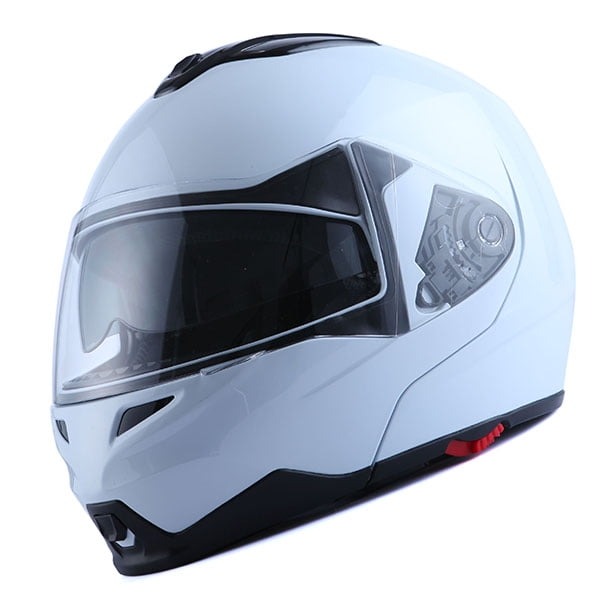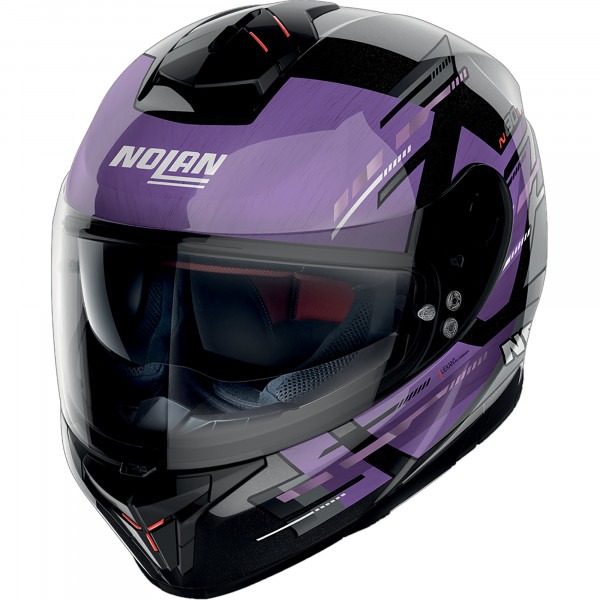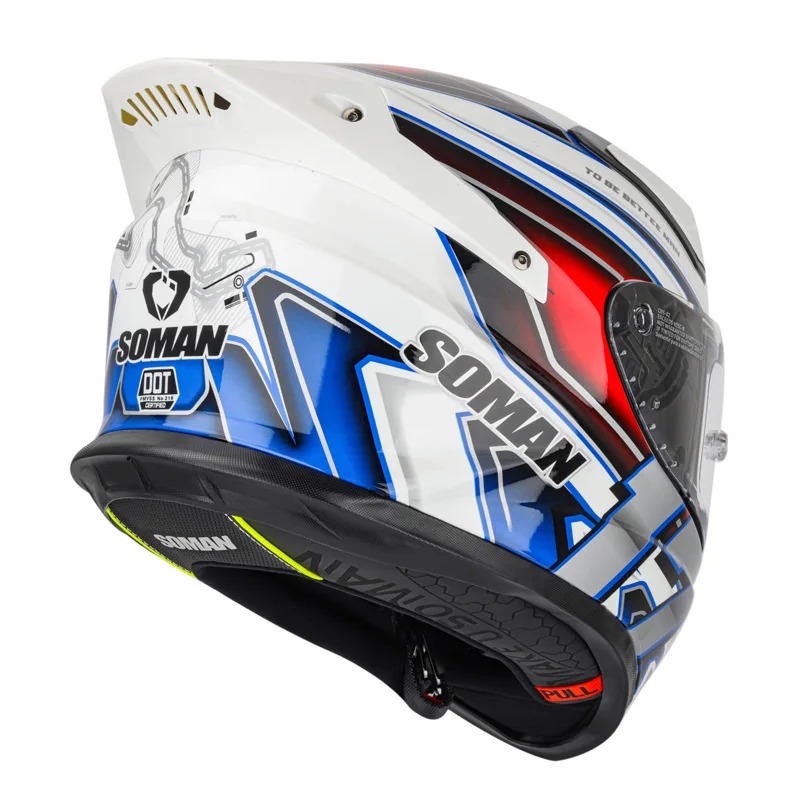Jan 20, 2025
How Often Should a Motorcycle Helmet Be Replaced
When it comes to motorcycle safety, one of the most critical pieces of equipment is the helmet. Understanding how often should a motorcycle helmet be replaced is essential to ensure maximum protection on the road. This article delves into the various aspects that influence helmet longevity and provides clear guidelines to help riders make informed decisions.
Importance of Helmet Integrity and Safety
The helmet is your main line of defense in a crash. Ensuring its integrity is crucial for your safety. A compromised helmet can fail to protect you in an accident, leading to severe injury or worse.
Why Helmet Safety is Non-Negotiable
Every time you ride, your helmet absorbs impacts. It weathers UV rays, resists abrasions and safeguards against head injuries. A reliable helmet can be the difference between a minor accident and a life-altering one. This is why helmet safety isn’t just advisable; it’s a non-negotiable aspect of riding.
Safety standards for helmets are rigorous for good reason. They ensure that every helmet on the market provides a basic level of protection. However, over time, the materials can degrade. This gradual wear and tear can compromise a helmet’s structure. When the integrity is compromised, the helmet may not perform as expected during an impact.
The Role of Proper Fitting
A helmet’s effectiveness is also tied to how well it fits. A poorly fitting helmet can come off in a crash, leaving the rider unprotected. It is vitally important to choose a helmet that fits snugly and comfortably. It should sit on the head without gaps and not move around when you shake your head.
Remember to replace a helmet immediately if it has been involved in a crash, regardless of visible damage. Even if it looks intact, its inner workings may be damaged. Always prioritize safety and never compromise on helmet integrity. How often should a motorcycle helmet be replaced? That depends on several factors, which we will explore further in this guide.
Life Expectancy of Motorcycle Helmets

The lifespan of a motorcycle helmet is not indefinite. Most helmets have a service life ranging from three to five years. This span is from the date of manufacture, not the purchase date. Even if a helmet sits on a shelf, its materials start aging from production. This aging can affect the helmet’s safety features and performance.
How Materials and Use Impact Longevity
Materials used in helmet construction begin to degrade over time. Factors like exposure to sunlight, chemicals, and extreme temperatures can speed up this process. The actual use of the helmet also plays a significant role. Frequent riders may need to replace their helmets more often. Even the oils from your skin can break down the interior lining over time.
The ‘Five-Year Rule’
Many safety organizations and manufacturers advocate the ‘five-year rule’. This suggests replacing your helmet every five years, regardless of visible signs of wear. This follows the understanding that five years is the typical period after which helmet integrity may be compromised. However, advancements in materials may extend this period in the future. Meanwhile, always stay informed about how often should a motorcycle helmet be replaced based on current standards.
The Importance of Manufacturing Date
Always check the manufacturing date when buying a new helmet. Do not buy helmets close to or past the recommended replacement period. A helmet beyond its prime could offer less protection. Ensure you get a helmet that will serve you adequately for its full lifespan.
Consistently evaluate your helmet’s condition. Replace it within the advised time frame to guarantee optimal protection on the road. Remember, the life expectancy of your helmet is a crucial element of your riding safety.
Factors That Affect Helmet Longevity
Numerous factors can influence how long your motorcycle helmet lasts. Below are the key elements that can affect helmet longevity.
Exposure to the Elements
Your helmet faces the elements daily. Sunlight, rain, and wind can wear it down. UV rays can weaken the helmet’s outer layer. This wears away the protective features over time.
Care and Storage
How you care for and store your helmet matters. A helmet stored in a cool, dry place will last longer. Avoid leaving your helmet in direct sunlight or in high humidity areas.
Frequency of Use
The more you use your helmet, the quicker it ages. If you ride daily, your helmet endures more. It gets exposed to stress and external factors, hastening its wear.
Product Quality
High-quality helmets are made to last. They can endure more wear and tear. Cheap helmets may not last as long. They might not have the same level of durability.
Modifications
Changes to your helmet can affect its integrity. Adding accessories or painting it can sometimes void warranties. They can also compromise safety.
Chemical Exposure
Helmets can degrade if exposed to certain chemicals. Gasoline, cleaning agents, and other substances can break down helmet materials. Handle your helmet with care when around chemicals.
By understanding these factors, riders can take steps to ensure their helmets maintain optimal condition for as long as possible. It is crucial to remember how often should a motorcycle helmet be replaced. It ensures the helmet’s safety features remain intact, keeping the rider protected during each ride.
Signs of Wear and Tear to Look Out For

Recognizing signs of wear and tear is critical for helmet safety. Look out for these indicators that suggest your helmet may need replacing:
Visual Damage to the Shell or Liner
Inspect your helmet for cracks, dents, or abrasions on the shell. The liner should not have visible signs of degradation such as fraying or tearing.
Fading Colors or Peeling Graphics
UV exposure can cause colors to fade and graphics to peel. This indicates that the helmet material may be weakening.
Loose or Damaged Straps and Buckles
Check the chin straps for fraying. The buckles should click securely without slippage or damage.
Compromised Comfort and Fit
If your helmet feels looser or more uncomfortable than before, the padding may be compressing or wearing out.
Disintegrating Foam
The protective foam inside the helmet can break down. If you notice bits of foam coming off, it’s time for an upgrade.
Funky Smells
Persistent unpleasant odors could be a sign of bacteria build-up, suggesting that the helmet’s material is breaking down.
Regularly consider how often should a motorcycle helmet be replaced. Do not ignore these signs of wear and tear that could undermine your safety on the road.
Advances in Helmet Technology for 2025
The year 2025 promises exciting developments in motorcycle helmet technology. Manufacturers are introducing features for enhanced safety and comfort. Awareness about helmet integrity is driving innovation.
Smart Helmets
Helmets are getting smarter. Features like built-in GPS, communication systems, and cameras are becoming common. This technology helps riders stay connected and safe.
Improved Materials
New materials are making helmets lighter and stronger. Composites and advanced plastics increase durability without adding weight. This means better protection for riders.
Enhanced Visibility
Expect helmets with better visors for visibility. Anti-fog technology, photochromatic lenses, and better peripheral vision are on the rise. This will help riders see more clearly, in all conditions.
Customizable Fit Systems
Custom fit is becoming more prominent. Advanced adjustment systems will allow helmets to fit more head shapes comfortably. Good fit enhances safety.
Integrated Safety Features
Look for helmets with integrated safety lights and collision sensors. These features aim to prevent accidents and aid in post-crash analysis.
Ventilation Improvements
Ventilation is key for comfort. More efficient airflow designs are in development, keeping riders cool while maintaining helmet integrity.
Connective Technology
Connective tech is being incorporated for emergency situations. This can include automatic alert systems upon impact, improving response times.
As helmet technology evolves, remember to replace older models. Keep in mind how often should a motorcycle helmet be replaced to ensure you benefit from these advancements. Safety is paramount, and the latest helmet technology can provide it.
The Role of Accidents in Helmet Replacement

When an accident occurs, immediate helmet replacement is crucial. Impact, even minor, can damage a helmet invisibly. Internal protective structures may suffer, rendering the helmet less effective. A damaged helmet won’t guarantee the same level of protection in a subsequent accident.
Immediate Replacement After a Crash
After any crash, replace your helmet. Even if no damage is visible, the helmet’s safety may be compromised. Hidden cracks or deformations can occur in the foam or shell.
Inspecting for Internal Damage
Always inspect for internal damage post-accident. If in doubt, consult the manufacturer or a professional. Some offer inspection services to determine helmet integrity.
Why Risk Isn’t Worth It
Continuing to use a helmet after an accident is risky. Never gamble with safety for economic reasons. Your life and well-being are worth more than the cost of a new helmet.
Remember, the role of accidents in helmet replacement is non-negotiable. The key is to ensure optimal protection at all times. How often should a motorcycle helmet be replaced isn’t just about time, but also about the events it experiences. Prioritize safety and replace your helmet immediately after any accident.
Proper Helmet Maintenance to Prolong Life
Maintaining your motorcycle helmet is key to extending its lifespan. Frequent and proper care can go a long way in preserving the helmet’s protective capabilities. Here’s what you should do to ensure your helmet remains in top condition:
Handle With Care
Always treat your helmet gently. Avoid dropping it, which can cause unseen damage. Non-visual impacts can still compromise a helmet’s integrity even if the damage is not immediately apparent.
Clean Regularly
Clean your helmet with mild soap and water. Harsh chemicals can weaken the helmet’s structure. Use a soft cloth for wiping down the surface. This helps prevent scratches and keeps the helmet looking new.
Inspect Often
Check your helmet before and after rides. Look for any signs of wear or damage. Pay close attention to the straps, buckles, and padding.
Store Correctly
When not in use, store your helmet in a cool, dry place. Heat and moisture can degrade the helmet materials over time. A helmet bag can protect it from dust and scratches.
Avoid Unnecessary Exposure
Limit the helmet’s exposure to the sun and extreme temperatures. Extended UV exposure can deteriorate the helmet’s materials. Keep it in a shaded area whenever possible.
Follow Manufacturer Guidelines
Adhere to the care instructions provided by the helmet manufacturer. These guidelines are designed to maximize the helmet’s lifespan. They know best how to maintain their product.
By following these tips, you play an active role in determining how often should a motorcycle helmet be replaced. Good maintenance practices can help ensure your helmet stays safe and effective for the longest time possible.
More Details